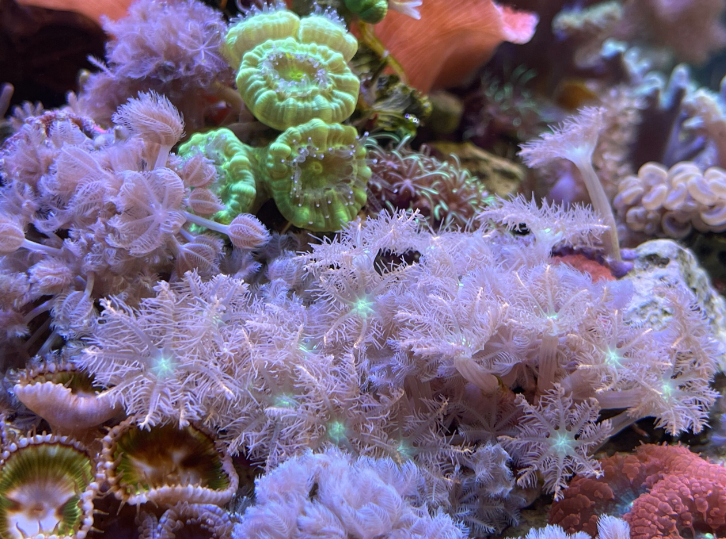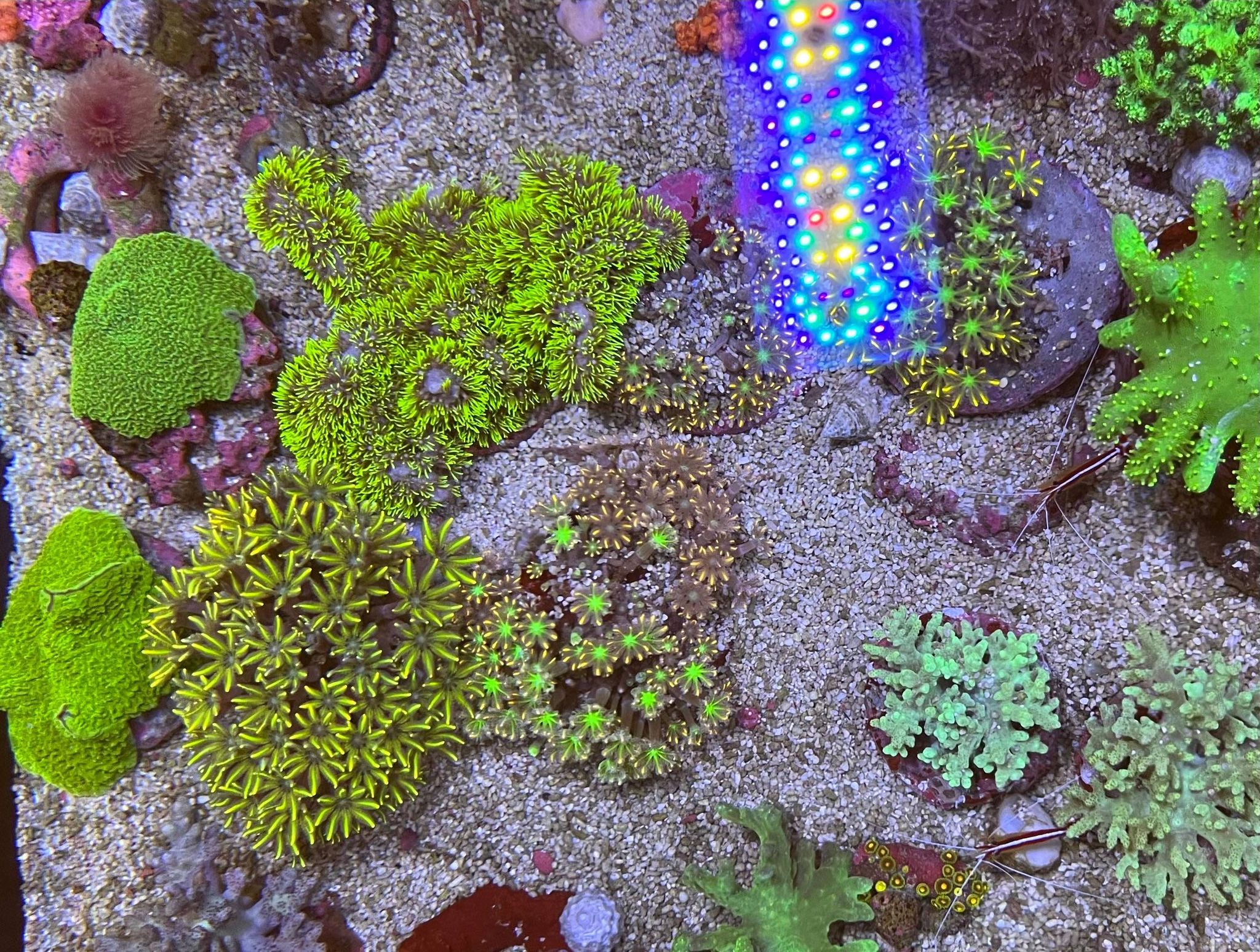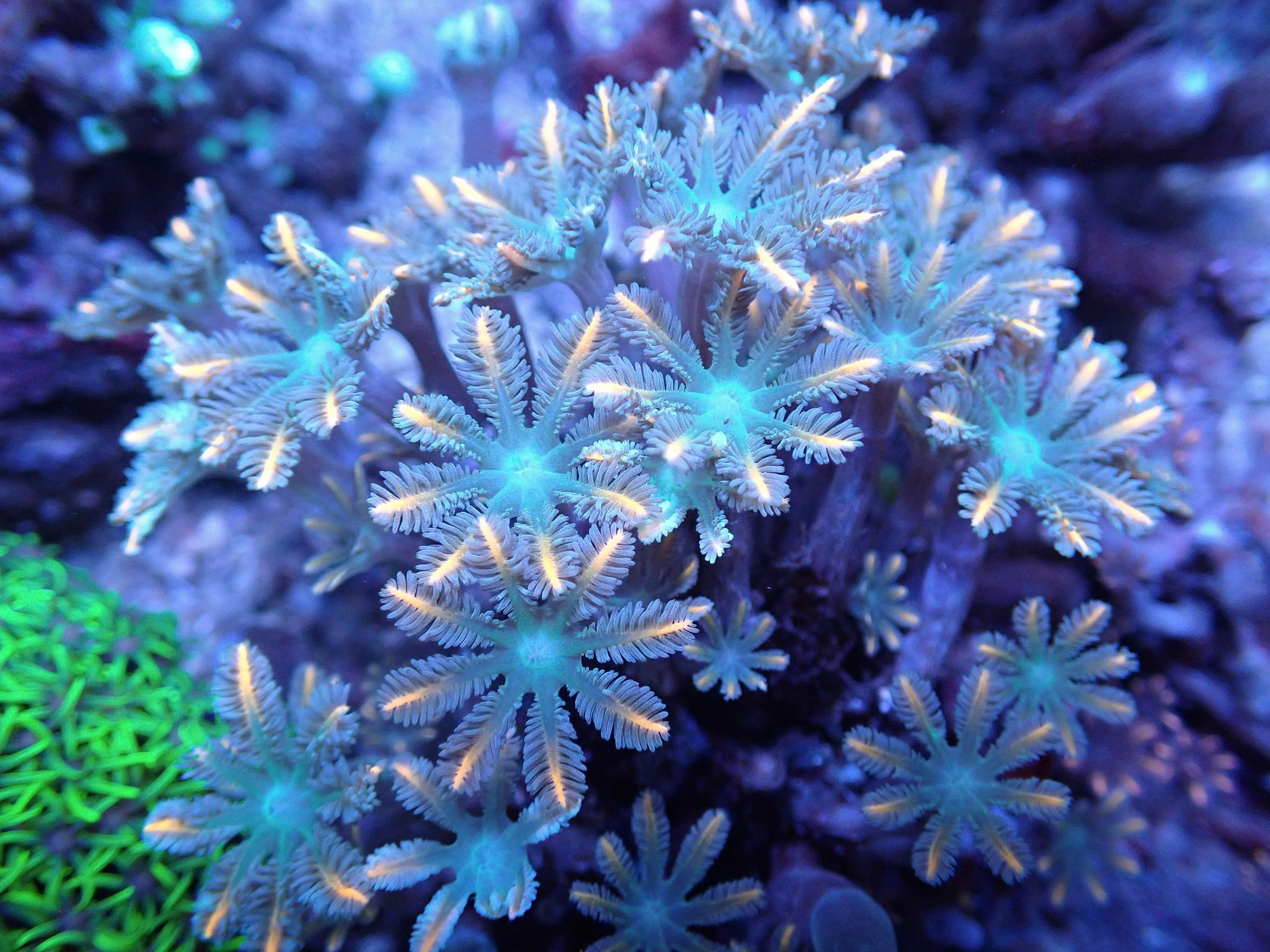If you want a coral that’s both easy to keep and colorful, look no further than the Clove polyps, Clavularia spp. They’ve been in the hobby for decades, but are one of those coral families which have really benefitted from being maricultured in Indonesia, and the effect that Blue LED lighting has on their polyps near lights out. Clove polyps are soft corals (Octocorals,) that belong to the Clavulariidae family, which also includes the Jasmine Coral, Knopia sp.

They are easy to characterize by way of their large, fluffy polyps with eight featherlike, pinnate tentacles, only due to selection by coral collectors,(and our lighting,) what used to be a beige soft coral colony can now come in myriad color forms with neon green mouths and purple tentacles with orange streaks that really pop – especially as soft corals go. And we recommend them for reef tanks large and small.

Clavularia polyps spread over rockwork, only due to larger than average stolons that can stand higher than Green star polyps and zoas and spread through them without getting stung. Ours weave through everything from Xenia to Caulastrea, and not seeming to sting or be stung the polyps pop up through the undergrowth like flowers in a flowerbed. If you don’t want them to run and spread throughout your aquascape, confine them to a single rock or island, and they are invasive in some parts of the world.
There are over sixty valid species within the genus but few aquarists or importers identify them past genus level. They’re easy to frag just by pulling colonies apart, clipping or sawing the rock they spread over, or just by using a blade or scissors.

Clavularia is tolerant of low water flow and medium to low lighting, although we have kept them under anything from a single 40-watt LED fixture to a pair of high-powered 200-watt fixtures with no obvious detriment either way. As with all corals, we keep them in fairly optimum water conditions with parameters close to that of natural seawater. We feed them once a week with powdered coral food and liquid amino acids, although they would probably thrive in higher nutrient levels and with more frequent feeding too.
Look out for one called Fireworks, which really pops, but even then Clavularia sold as “fireworks” vary in coloration and the fluffiness of those feathery tentacles.



